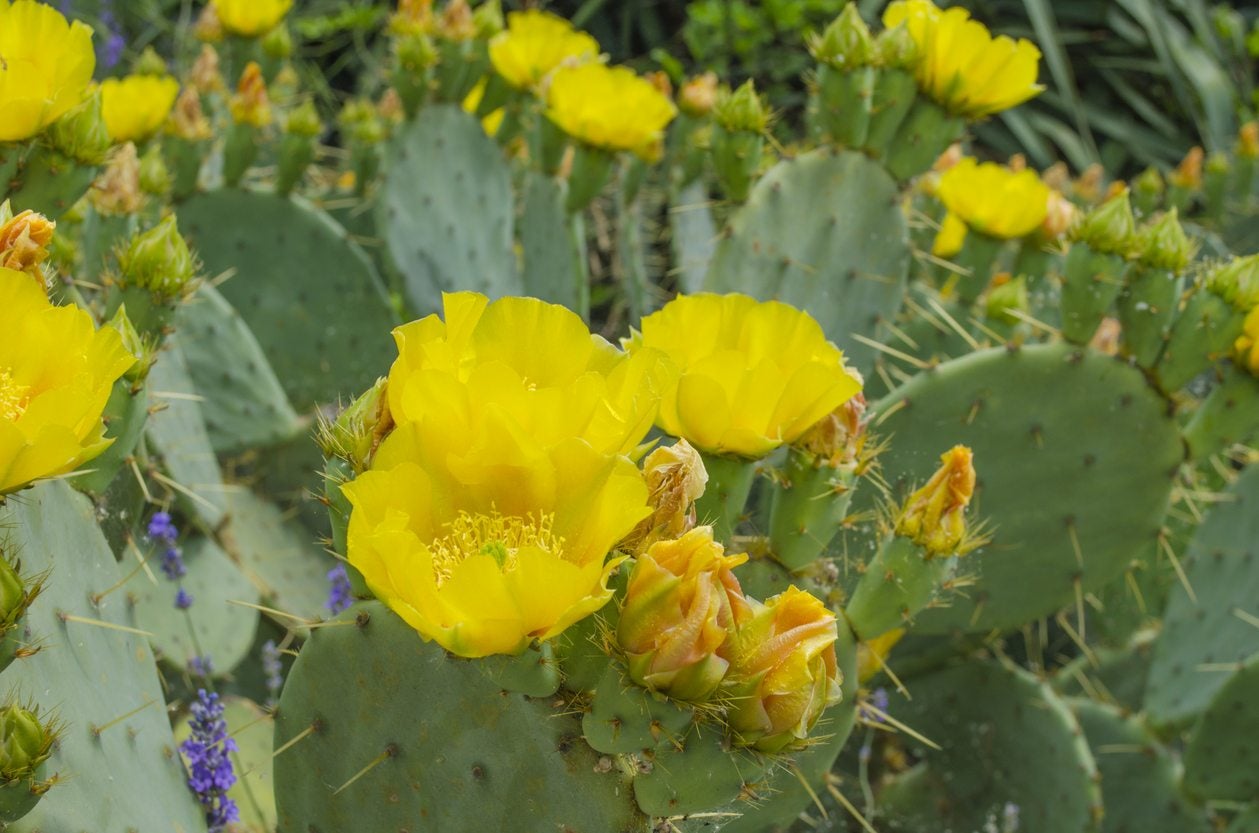Opuntia Cactus Varieties: What Are Different Types Of Opuntia Cactus


Opuntia is the largest genus in the cactus family. You will recognize most by their classic "prickly pear" appearance. There are many types of Opuntia cactus that are common houseplants and are known for their jointed stems and flattened pads. All varieties of Opuntia are easy to grow provided there is ample light, well-drained soil, and warm temperatures during the growing season. In warmer climates, growing Opuntia in gardens adds desert appeal and unique flora to the landscape.
Different Varieties of Opuntia
Cacti provide numerous textures and forms for the fun dish garden or as standalone specimens. Opuntia, with their many varied species, are readily available and have a classic form that calls to mind open deserts and searing sun. The genus can be found wild across the North and South Americas, the Caribbean, Argentina, and even as far north as Canada. Interestingly, Opuntia freely hybridize, leading to new species and hybrid crosses. In the U.S., there are 40 recognized species. Most Opuntia species do not have classic spines, but an arrangement called glochids. These are fine, detachable, and fuzzy to woolly. If you touch them, you will immediately wish you hadn't, as they are extremely irritable and difficult to remove. In spite of this detriment, Opuntia are extremely appealing and easy to grow. Some types of Opuntia cactus do have large spines, however. Flowers are cup-shaped and may be yellow, white, or pink. These may develop into fruits of red or green. Some Opuntia cactus varieties have edible fruits called "tunas." These can be made into a delicious jam or even candy. The flat pads of the cactus are called cladodes. These pads are also edible and called "nopales." Some fun Opuntia to grow might include:
- Purple prickly pear
- Barbary fig
- Tulip prickly pear
- Bunny ears prickly pear
- Violet prickly pear
- Pancake prickly pear
- Beaver tail pear
Growing Opuntia Cacti
The one thing Opuntia cannot stand is soggy soil. Soil needs to drain freely and have a high amount of gritty material mixed in. For outdoor plants, choose a sunny location with protection from winter winds. Fertilize monthly with a 0-10-10 mix to help produce flowers and fruits. Opuntia, once established, will tolerate as much water as necessary to keep the pads from wrinkling. During the winter, diminish watering by half, as the plant will be in dormancy. Established cacti can have pads harvested six times per year. Use clean, sharp knives for harvesting. Take pads from midmorning to midafternoon when the acid content is lowest for the best flavor. "Tunas" are ripe at the end of summer. To harvest fruits, wait until the glochids fall off and then gently twist and pull. Ripe fruit should come off easily.
Propagating Opuntia
The cactus is easy to grow from seed, but its slow progression means fully sized specimens will take years. For faster production, try growing Opuntia cacti from pads. Cut a pad that is at least six months old and allow the cut end to dry out a bit or callus. If you wish, dip the end in Bordeaux mix or brush on an anti-fungal dust. Make a mixture of equal parts sand or pumice and soil. Settle the pad an inch (2.5 cm.) or so deep into this mixture with rocks or stakes around to hold it upright. Do not water until the pad has sent out roots, usually in a month. Then water the plant but let it dry out between successive waterings. Your new plant will flower and set fruit during the first year. Limit the number of pads you take from the plant for at least a year.
Sign up for the Gardening Know How newsletter today and receive a free copy of our e-book "How to Grow Delicious Tomatoes".

Bonnie Grant is a professional landscaper with a Certification in Urban Gardening. She has been gardening and writing for 15 years. A former professional chef, she has a passion for edible landscaping.